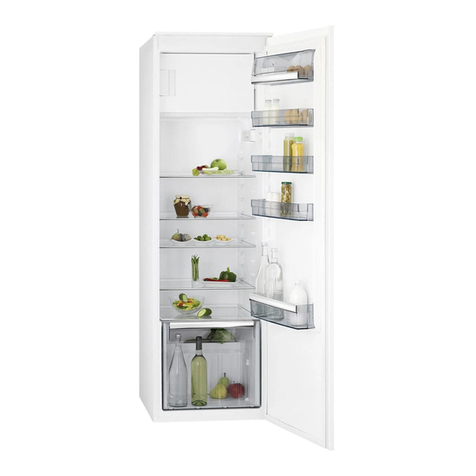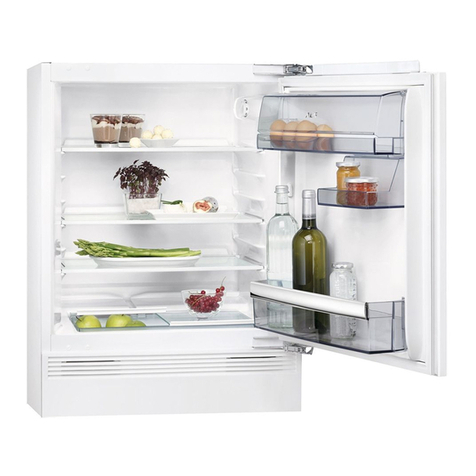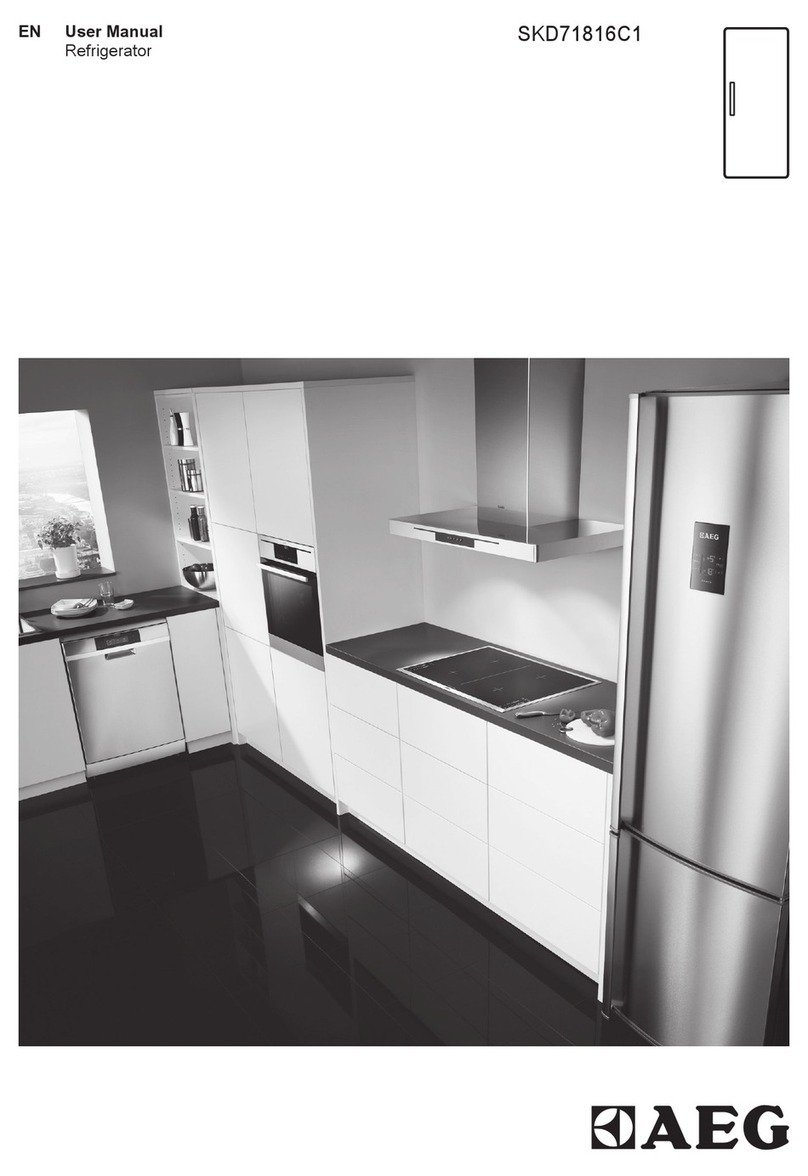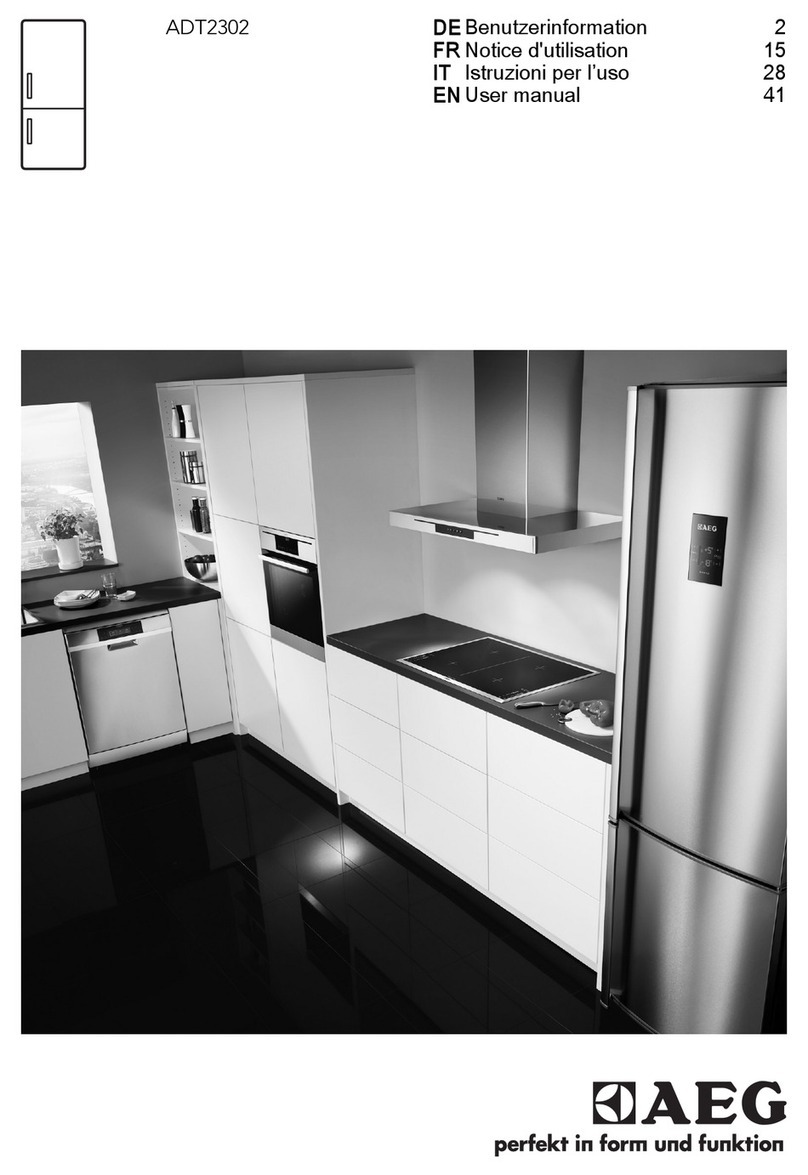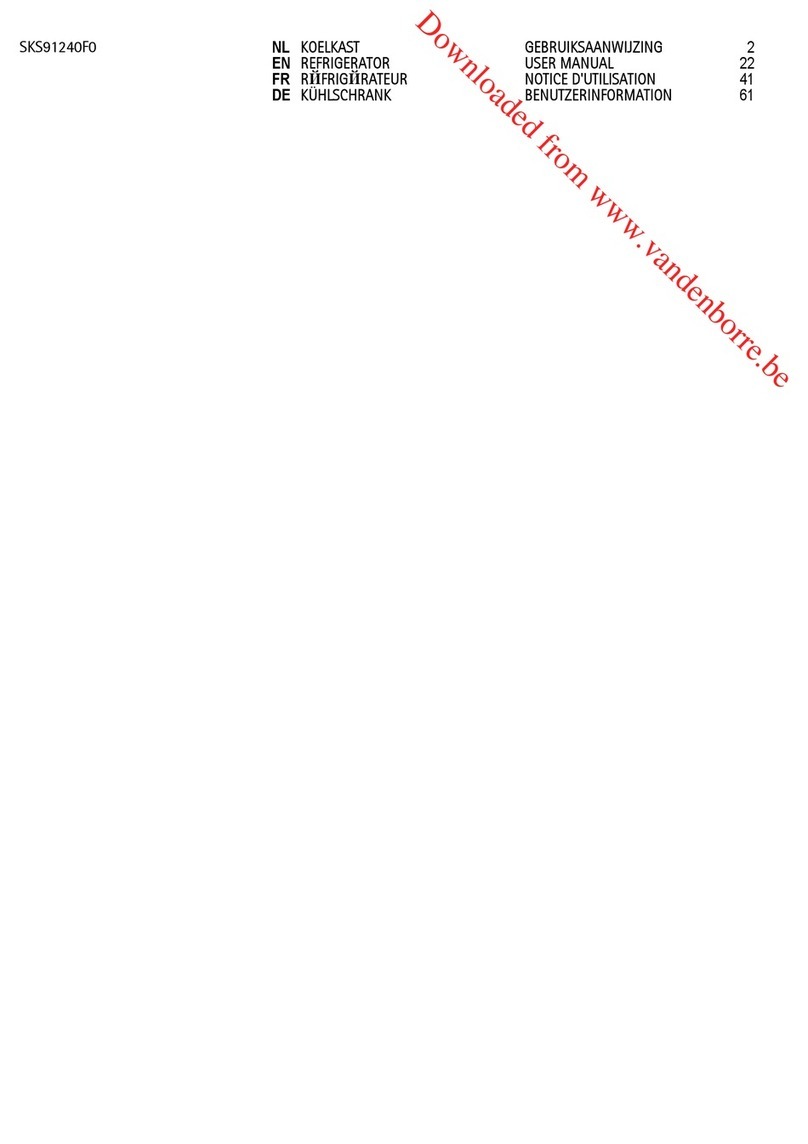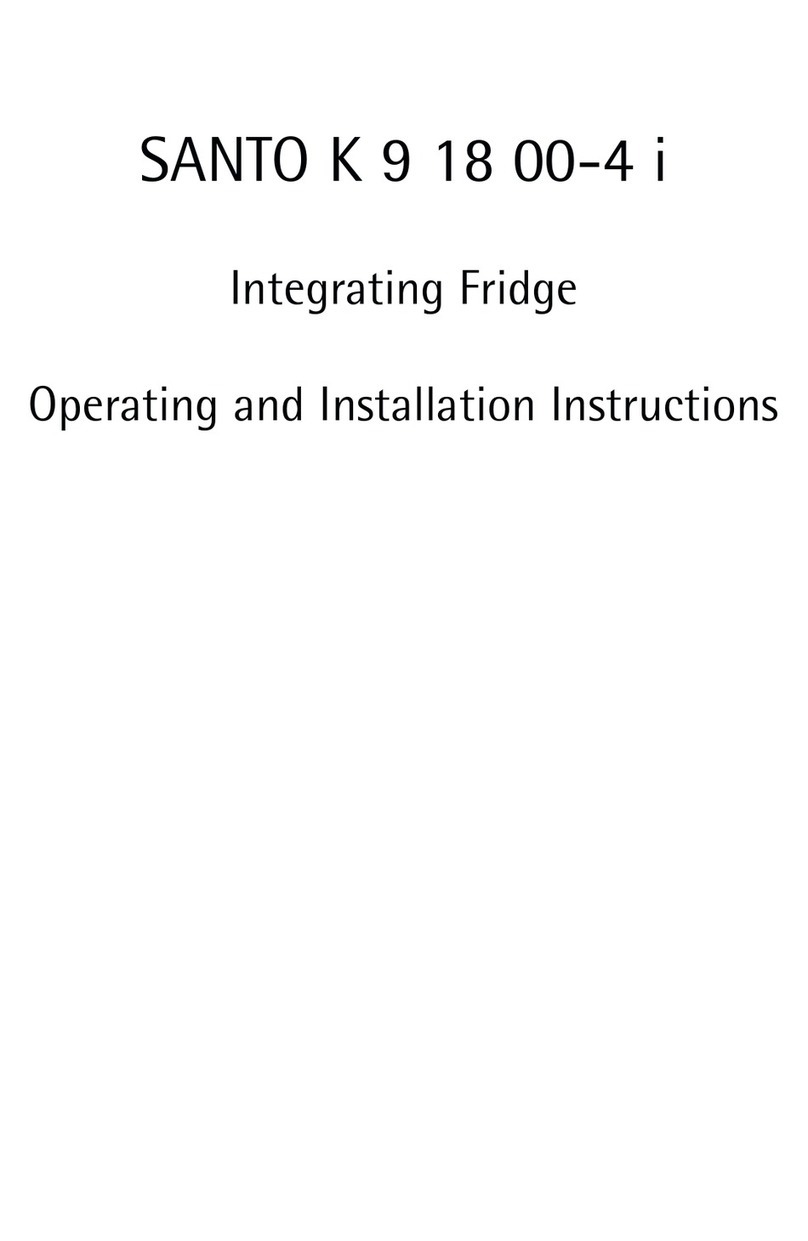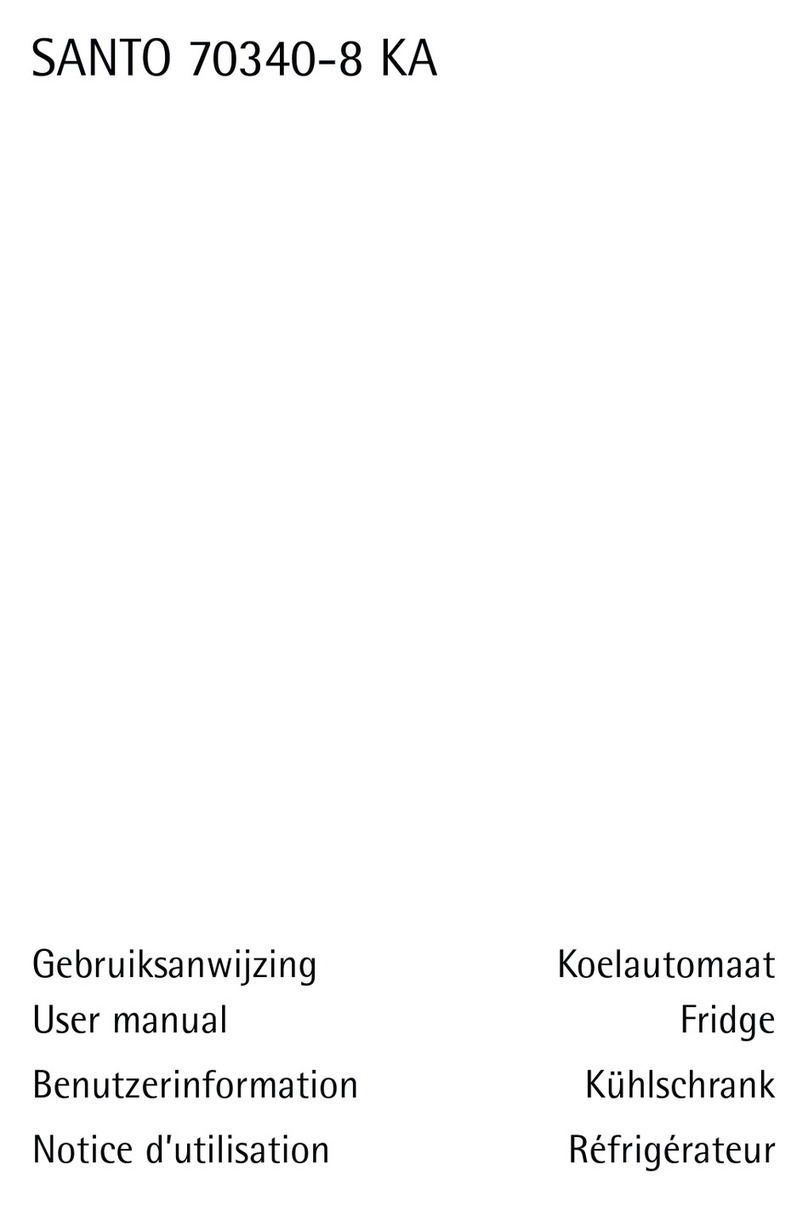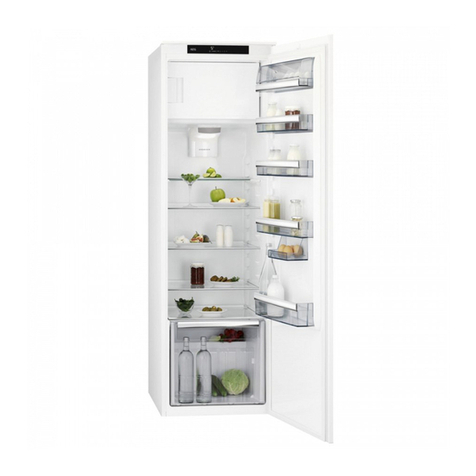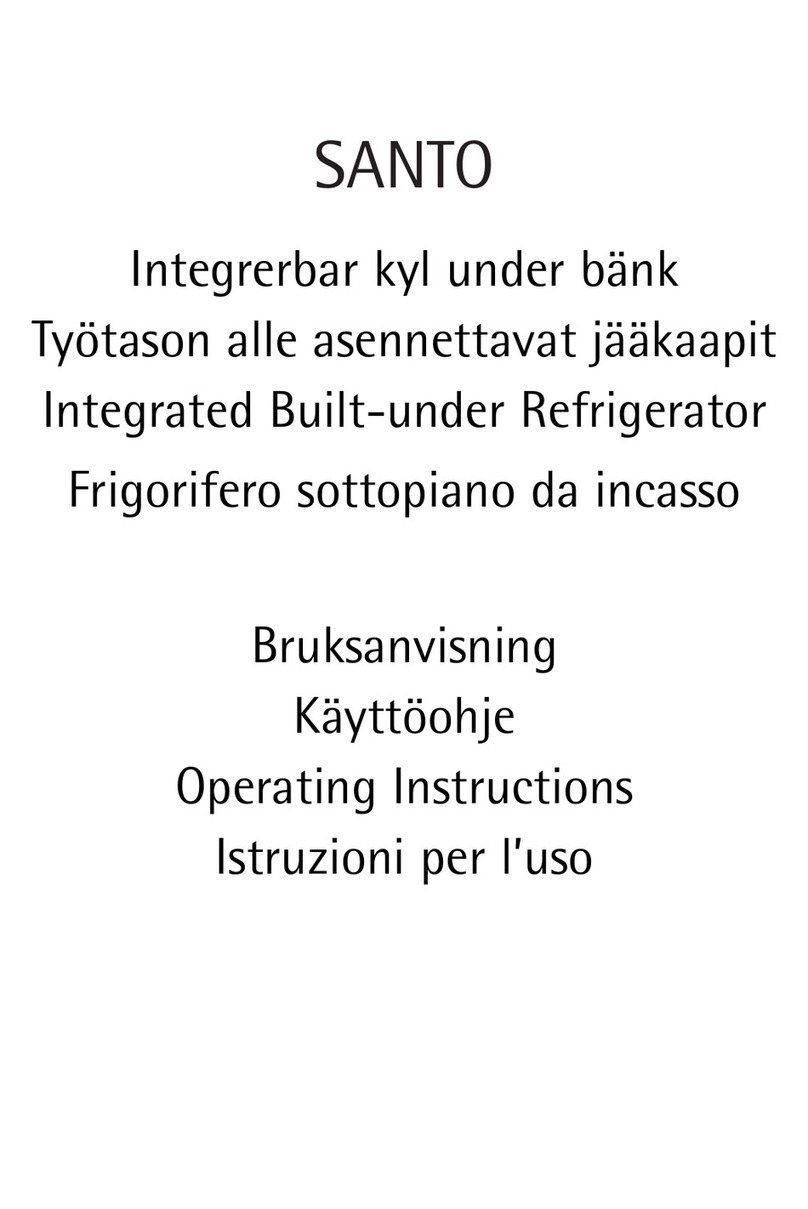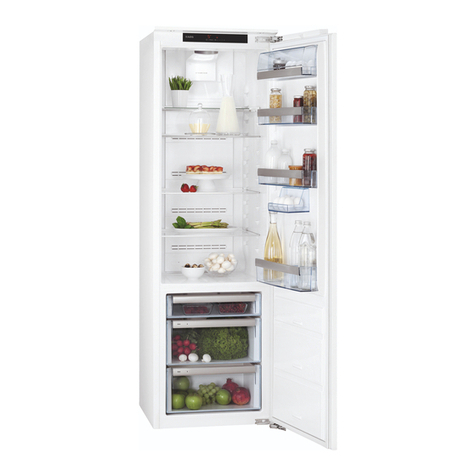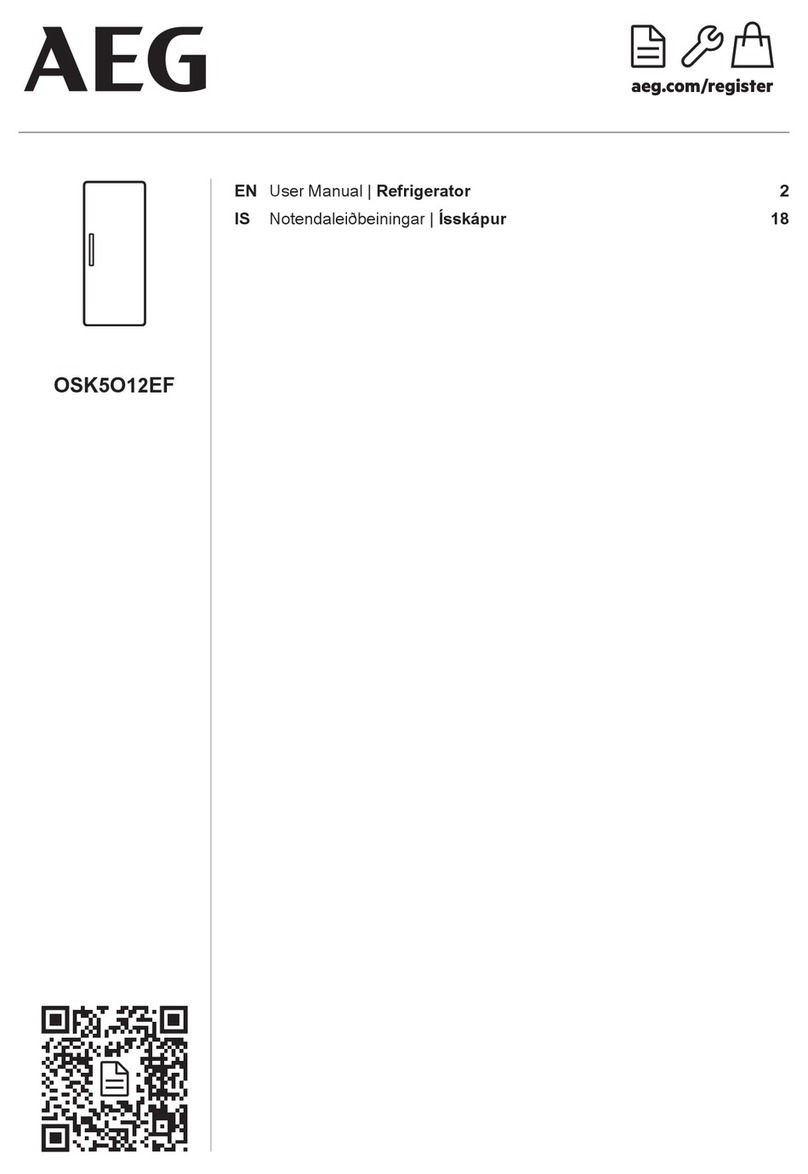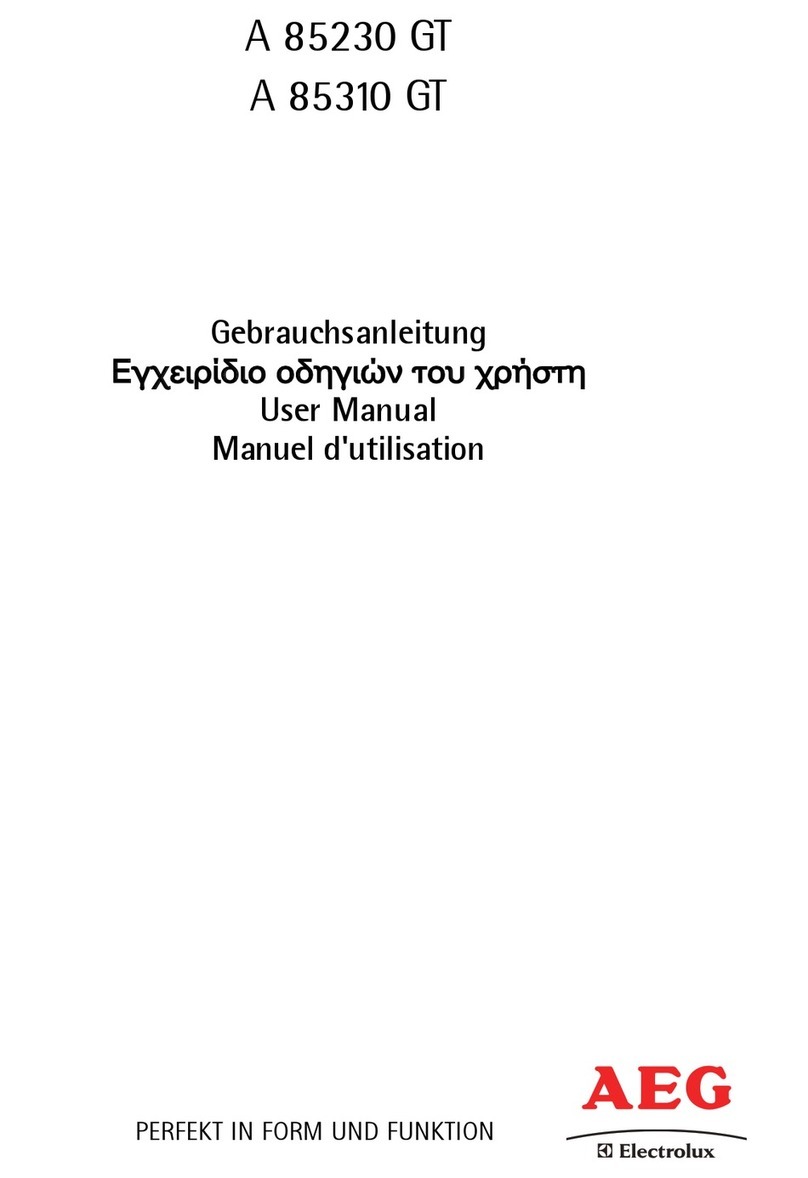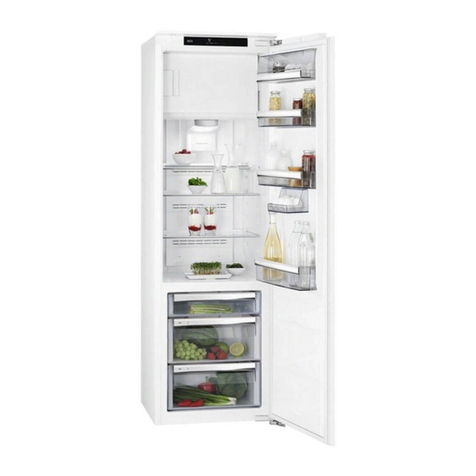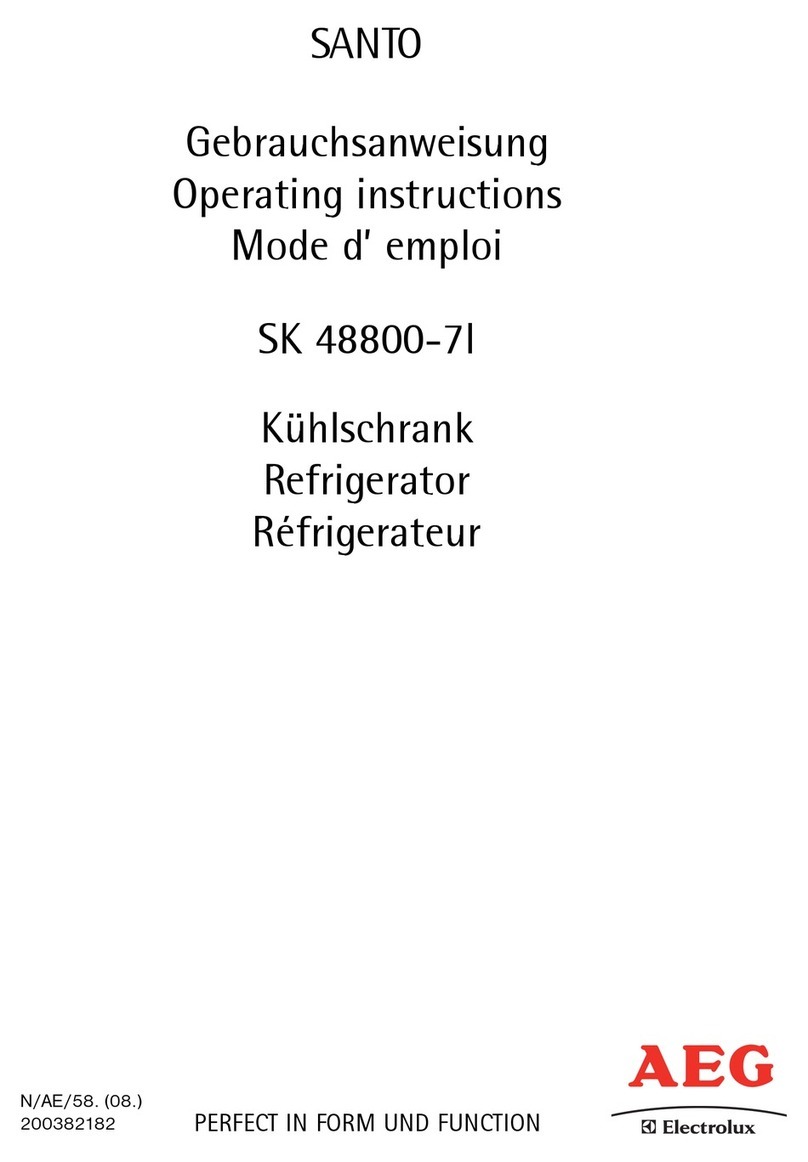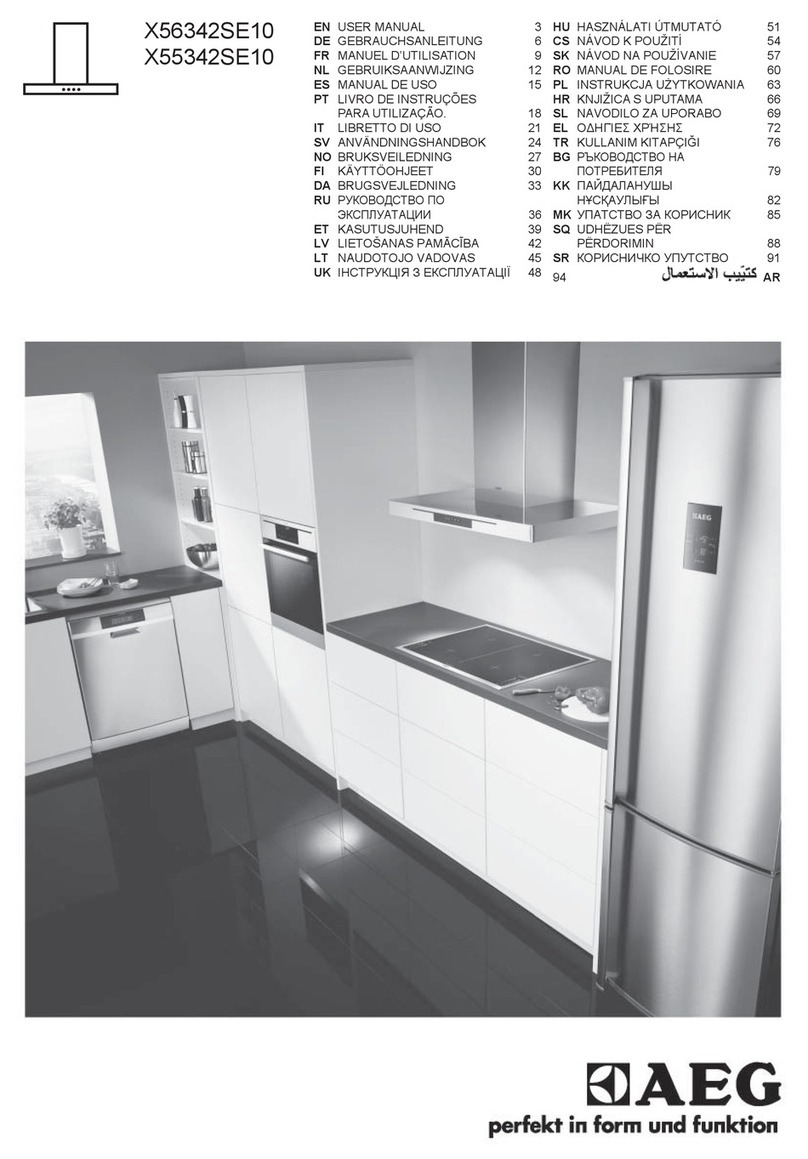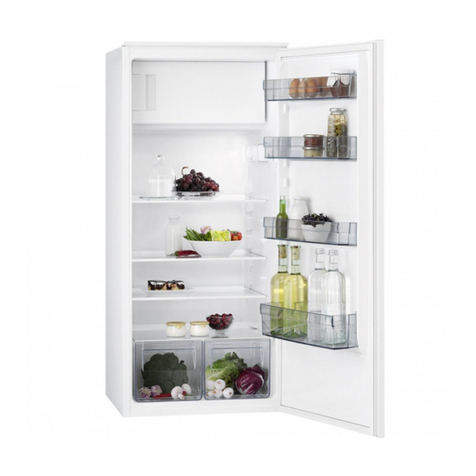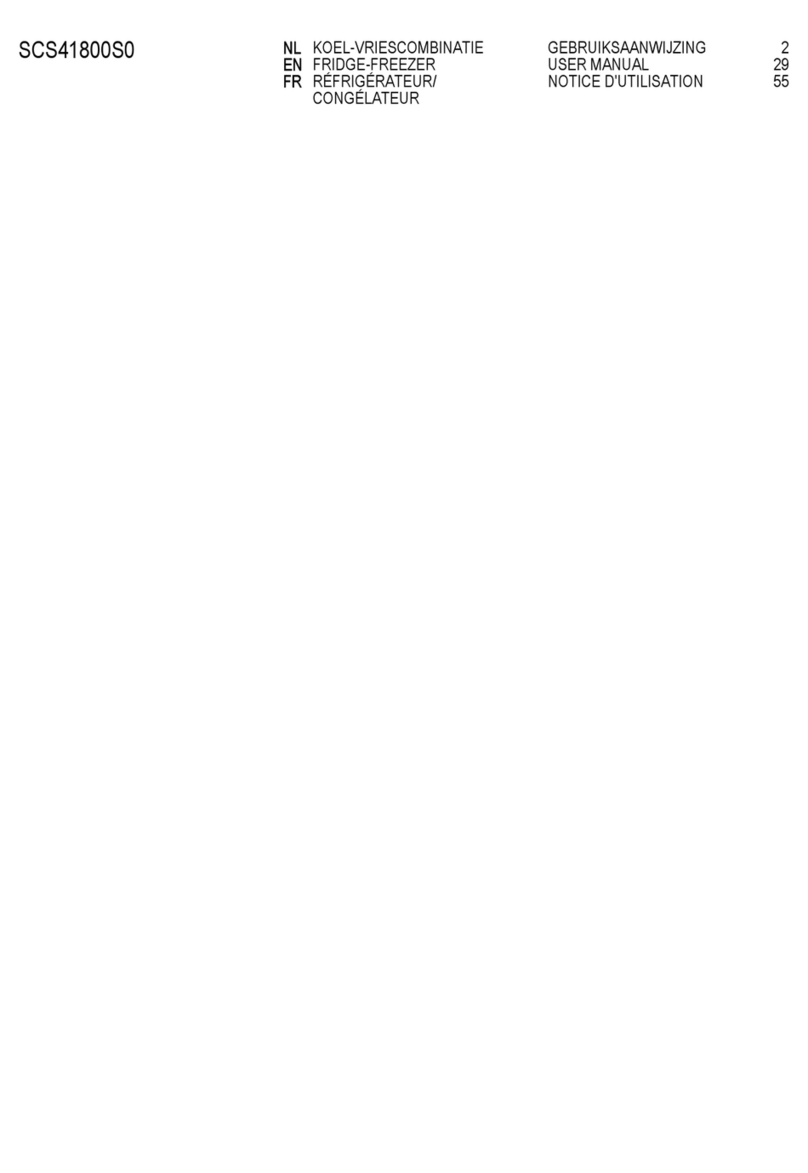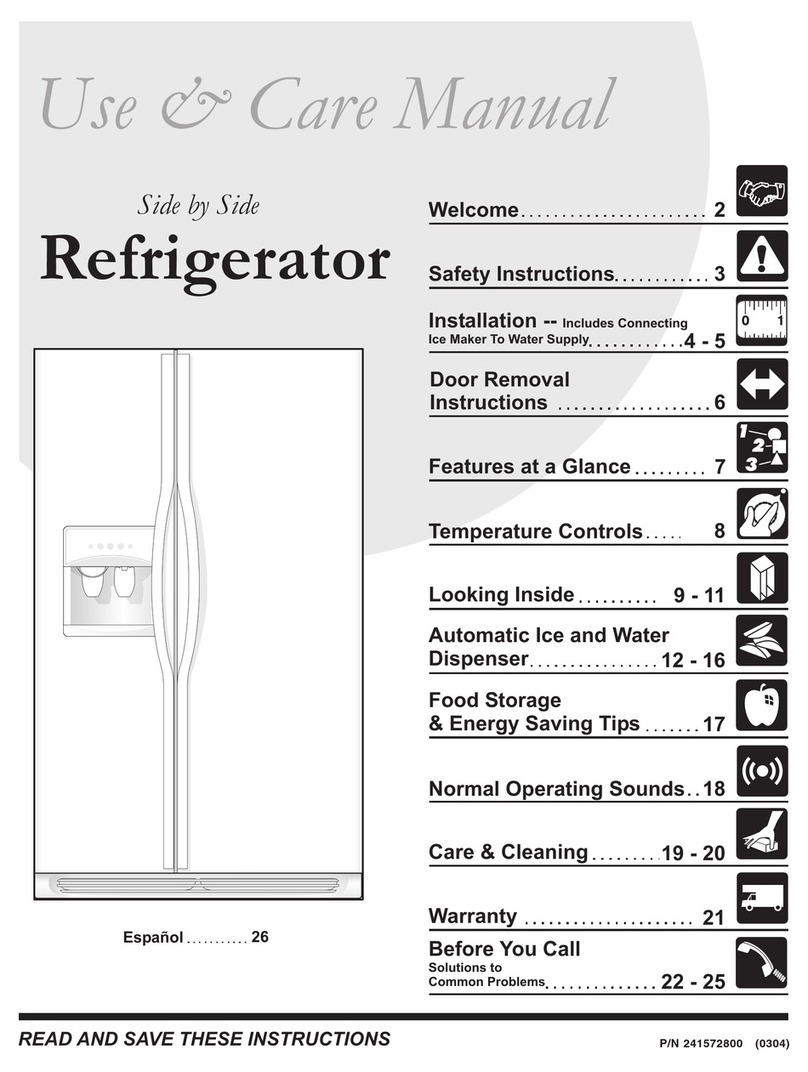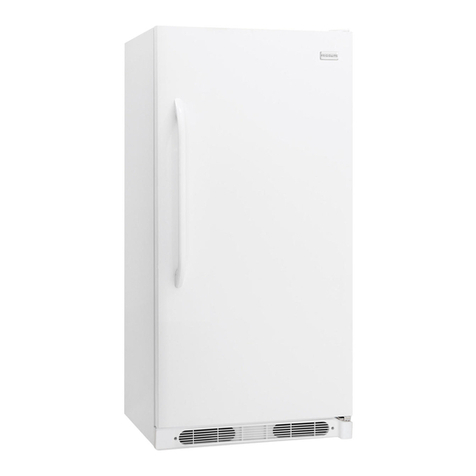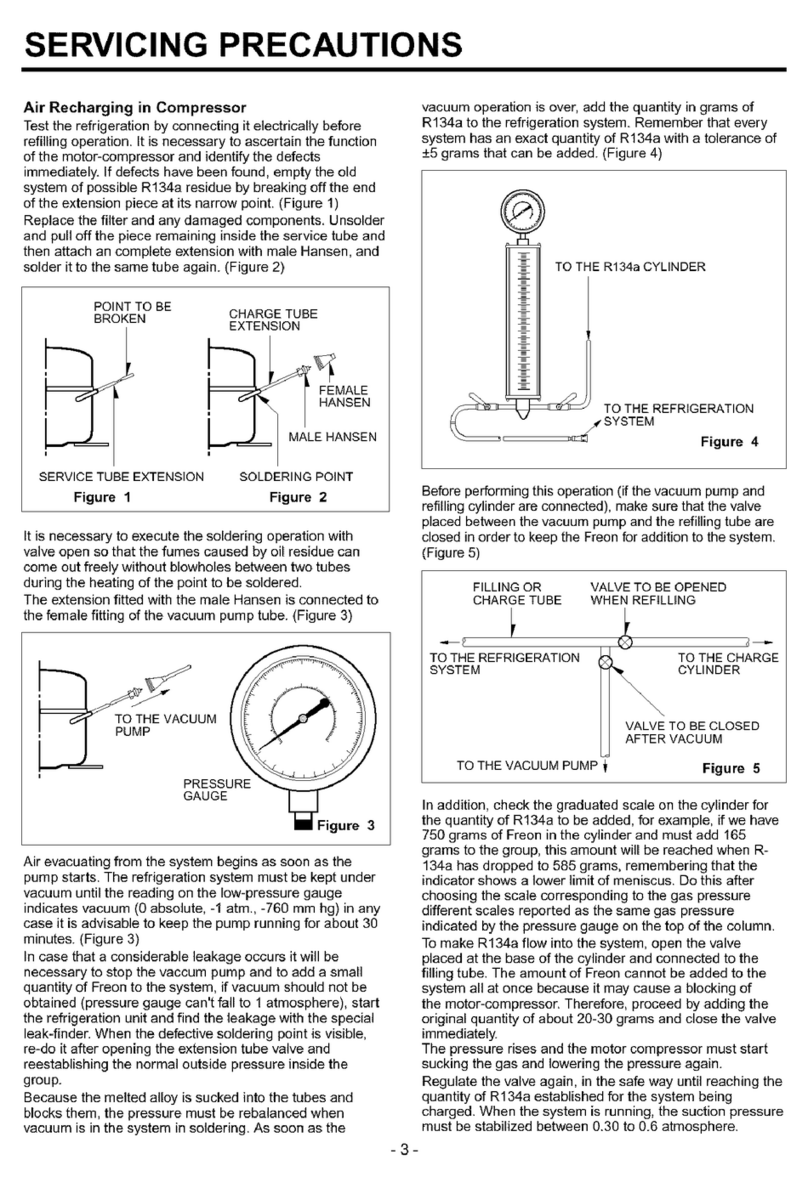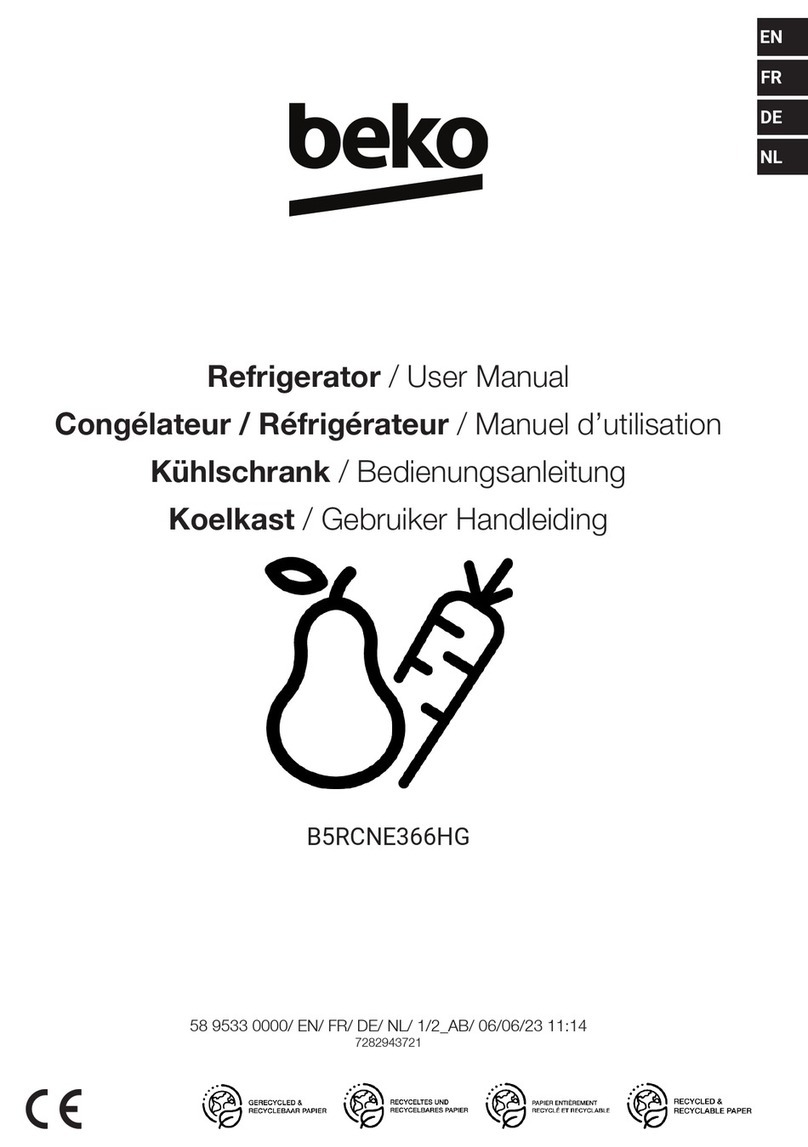4
Safety
The safety aspects of our refrigerators/freezers comply with accepted tech-
nical standards and the German Appliance Safety Law. Nevertheless, we
consider it our obligation to make you aware of the following safety infor-
mation:
Intended use
• The refrigerator is intended for use in the home. It is suitable for the coo-
ling, freezing and storing of frozen food, as well as for making ice. If the
appliance is used for purposes other than those intended or used incor-
rectly, no liability can be accepted by the manufacturer for any damage
that may be caused.
• Alterations or changes to the freezer are not permitted for reasons of
safety.
• If you use the refrigerator in a commercial application or for purposes
other than the cooling, freezing or frozen storage of foods, please obser-
ve all valid legal regulations for your application.
Prior to initial start–up
• heck the refrigerator for transport damage. Under no circumstance
should a damaged appliance be plugged in! In the event of damage, please
contact the vendor.
Refrigerant
The refrigerant isobutane (R600a) is contained within the refrigerant circuit
of the appliance, a natural gas with a high level of environmental compa-
tibility, which is nevertheless flammable.
• During transportation and installation of the appliance, be certain that
none of the components of the refrigerant circuit become damaged.
• If the refrigerant circuit should become damaged:
– avoid open flames and sources of ignition;
– thoroughly ventilate the room in which the appliance is situated.
Safet of children
• Packaging (e.g. wraps, polystyrene) can be dangerous for children. There is
a risk of suffocation! Keep packaging material away from children!
• Please make old appliances unusable prior to disposal. Pull out the mains
plug, cut off the mains cable, break or remove spring or boltcatches, if fit-
ted. By doing this you ensure that children cannot lock themselves in the
29
GUARA TEE CO DITIO S
Standard guarantee conditions
We, AEG, undertake that if within 12 months of the date of the purchase this AEG applian-
ce or any part thereof is proved to be defective by reason only of faulty workmanship or
materials, we will, at our discretion repair or replace the same FREE OF HARGE for labour,
materials or carriage on condition that:
· The appliance has been correctly installed and used only on the electricity or gas supply sta-
ted on the rating plate.
· The appliance has been used for normal domestic purposes only, and in accordance with
the manufacturer's operating and maintenance instructions.
· The appliance has not been serviced, maintained, repaired, taken apart or tampered with by
any person not authorised by us.
· All service work under this guarantee must be undertaken by a Service Force entre. Any
appliance or defective part replaced shall become the ompany's property.
· This guarantee is in addition to your statutory and other legal rights.
· Home visits are made between 8.30am and 5.30pm Monday to Friday. Visits may be avai-
lable outside these hours in which case a premium will be charged.
Exclusions
This guarantee does not cover:
· Damage or calls resulting from transportation, improper use or neglect, the replacement of
any light bulbs or removable parts of glass or plastic.
· osts incurred for calls to put right an appliance which is improperly installed or calls to
appliances outside the United Kingdom.
· Appliances found to be in use within a commercial environment, plus those which are
subject to rental agreements.
· Products of AEG manufacture which are not marketed by AEG.
European Guarantee
If you should move to another country within Europe then your guarantee moves with you
to your new home subject to the following qualifications:
· The guarantee starts from the date you first purchased your product.
· The guarantee is for the same period and to the same extent for labour and parts as exists
in the new country of use for this brand or range of products.
· This guarantee relates to you and cannot be transferred to another user.
· Your new home is within the European ommunity (E ) or European Free Trade Area.
· The product is installed and used in accordance with our instructions and is only used dome-
stically, i.e. a normal household.
· The product is installed taking into account regulations in your new country.
Before you move please contact your nearest ustomer are centre, listed below, to give
them details of your new home. They will then ensure that the local Service Organisation is
aware of your move and able to look after you and your appliances.
France Senlis +33 (0)3 44 62 29 29
Germany Nürnberg +49 (0)800 234 7378
Italy Pordenone +39 (0)800 117511
Sweden Stockholm +46 (0)8 672 53 60
UK Luton +44 (0) 8705 350 350
